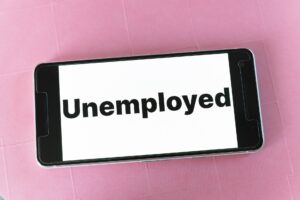Managing personal finances can often seem overwhelming and confusing, but creating a well-defined financial plan does make it easier to achieve financial goals and secure a stable financial future.
Whether you are just starting out in your career, preparing for retirement, or somewhere in between, this is the ultimate guide that you need, to take control of your finances regardless of your circumstances and goals.
But first…
What is financial planning?
Financial planning is the simple process of organizing your money around how you’re going to make money, exactly how you’re going to save and spend it and how you are going to make sure you live a comfortable life and still hit your short-term, medium-term and long-term financial goals and achieve financial security and wellness.
This is a very important aspect of personal finance. It is not just for the people who are doing well financially. Since I work with a lot of low-income earners who want to understand budgeting and investing, I love to tell them time and time again that they do not have to be earning seven figures to be able to hit their goals. All they need is a good financial plan.
Now let’s get into how you can get started with setting your financial goals for the year.
What you need to create a financial masterplan.
1. Set aside a designated time for the planning activity.
This is a process that you should be very intentional with. You do not want to do this in a passive manner. What I recommend is that you take yourself out of your normal environment. Whether that is taking yourself out for a cup of tea/coffee or whatever it is that works for you, just be in an environment where you are feeling very relaxed. If you prefer to work in a quiet space go for that. Let this be the perfect money date with yourself.
Resources you’ll need:
- Somewhere to note down the intentions that you’ve set for yourself. Whether that is a notebook or a laptop, just ensure that you are not just taking mental notes but are actually writing them down. This is a plan and it must be written down.
- Your bank statements, loan statements, and statements from your savings and investments accounts. These will ideally help you figure out exactly what you have as you are getting started with the process.
- A tool to structure your process. Whether you’re going to be doing that on a mobile app, an Excel sheet, or your notebook, you’ll need a tool for this. I am such an excel girl, I love using it so I highly recommend excel.
2. Clearly define your financial goals.
Financial goal setting is actually a very easy process. You first need to break down your goals into short-term goals, medium-term goals and long-term goals.
Short-term goals are anything you want to get done in the next 12 months. Medium-time goals are those that you want to achieve within the next 2 to 5 years. Long-term goals are anything you want to do in 5+ years.
For you to find out what your financial goals are you need to ask yourself these questions:
- What do I need to do with my money in the next 12 months?
- What do I want to achieve with my money in the next 2 to 5 years?
Figuring out what you would want your money to do for you and what you want to achieve is the first step in defining your goals.
3. Attach timelines and amounts to those financial goals.
Once you’ve defined and listed down what your goals are, the next step you need to take is to attach timelines and amounts to those financial goals.
Note: it is not a financial goal if you have not attached a number to it.
This is where many of us drop the ball. I totally get the intention and the drive we start the year with while we state everything we would like to achieve that year. A lot of us fail when we don’t ask ourselves, ‘Exactly how much will this goal cost me?’
For instance, if you want to clear off your debt this year, don’t just say ‘I would want to pay off debt this year.’ Put a number to it and say ‘I want to clear 100k of my debt in 2023.’ Now that’s a well-done financial goal.
If you would like to build an emergency fund, say ‘I would like to raise 100K towards my emergency fund in 2023.’
Having a number in mind helps a lot because you are actually able to work backward when you have an amount and a timeline. Like with the example of the 100K that I want to have in my emergency fund by the end of the year, it’s easy for me to break it down. If I start in March, I have 10 months to go, 100K divided by 10 months means I should be adding 10K to the account every month.
Now this goal is more realistic and not just wishful thinking. Once you do that then you will be able to actually hit some of your financial goals.
Start by asking yourself, ‘How much do I need and by when do I need it done?’
4. Figure out where the money you need is coming from.
After you’ve listed your goals down, you’ve clarified them, you’ve set the amount you need and you have the timeline set, now you need to figure out exactly where the money is going to come from.
This is where income management and budgeting come in. You need to figure out, given your bills and your expenses if you are able to raise this x amount of money towards the goals that you’ve set for yourself for the year.
This is where it gets really tough when you have super ambitious goals but when you break them down, you realize that your salary cannot facilitate that level of lifestyle that you anticipated. This is the story for so many people and just like many others even I have gone through this.
It doesn’t mean that this goal-setting process is unrealistic. If you come to this realization, you just have to start managing your income and figuring out how you can make it happen. You have two choices here.
- Cut your costs and free up that money and direct it toward those goals. Or work with a necessities-only budget. (Bare bones budget)
- Start figuring out how you can make more money. This could be by negotiating better pay at your workplace, running your business alongside your 8 to 5 or starting freelancing online as a side hustle.
You also need to be tracking your expenses to see exactly where your money is going every single month. This could be on a mobile app or on an excel sheet.
If you don’t have a tool for this I have one for you. Get a done-for-you budget tracking excel sheet curated to help you track your bills, debts, savings, investments, your projects and even a food and shopping list.
Remember, it’s never about how much money you’re earning, it’s always going to be about what you do with what you earn.
5. Put measures in place to monitor your progress.
You need an actual budget and a written plan that will help you monitor your financial plan.
Let’s say you earn 100K per month, you can write it down as, 10K will be going towards my savings every month. Then break it down even further and say 5K will go into my emergency fund and 5K will go into my retirement fund. X amount will go to school fees, X amount will go to debt payment and you can set a standing order with the amount of money that will be going towards that.
How do you put measures in place to ensure that you remain consistent with your plan? Make a point to check in with yourself at least on a monthly basis. Personally, I love to check my accounts at least every weekend. I check my bank accounts, my money manager app and my excel sheet to just check the stats and see how much I spent on different things. I also get to call myself out when I go overboard with my spending.
Doing this at least weekly will help you catch yourself early enough before the month ends. If you only check in on your finances only at the end of the month, sometimes it could be too late and the damage is already done.
Once you’ve done the weekly check-ins, then, you can be doing the monthly money dates where you get to see how you handled money that month. When you’re able to put these measures in place, you’ll start getting very confident with money matters.
Ensure you make weekly, monthly and quarterly money reviews a priority.
To Note
Financial planning is not an event. It is an ongoing process. It needs to be a lifestyle. You don’t want to be the person who does financial planning at the beginning of each year and by March it’s yet another story of resolutions not working.
You need to embrace financial literacy as a life skill. The same way you cook, clean, and take care of your body is the same way financial planning needs to be part of your life.
Financial planning is maintenance and you need to do it as an ongoing process. That’s why we are doing the weekly check-ins, the monthly money dates and the quarterly financial planning sessions.
Creating a financial plan is not just a thing we do in January or at the beginning of the year. So if you miss January, you can still start now. It doesn’t always have to be at the beginning of a month. You’re not late!
If you still feel stuck to start on your own, you can get the budget for your best life masterclass where I teach you in-depth how to do all of these steps in detail.







7 Responses
Excellent lesson. I needed this. Thanks.
Thank you so much Coach Susan for this.
Thanks Soo much coach susan
In life we African do no want to read
But this is super ……. Thanks 👍 very much
This is so good Coach, will challenge myself.
Thank you Susan… this is so helpful.
Always learning from these newsletters . Thank you Coach